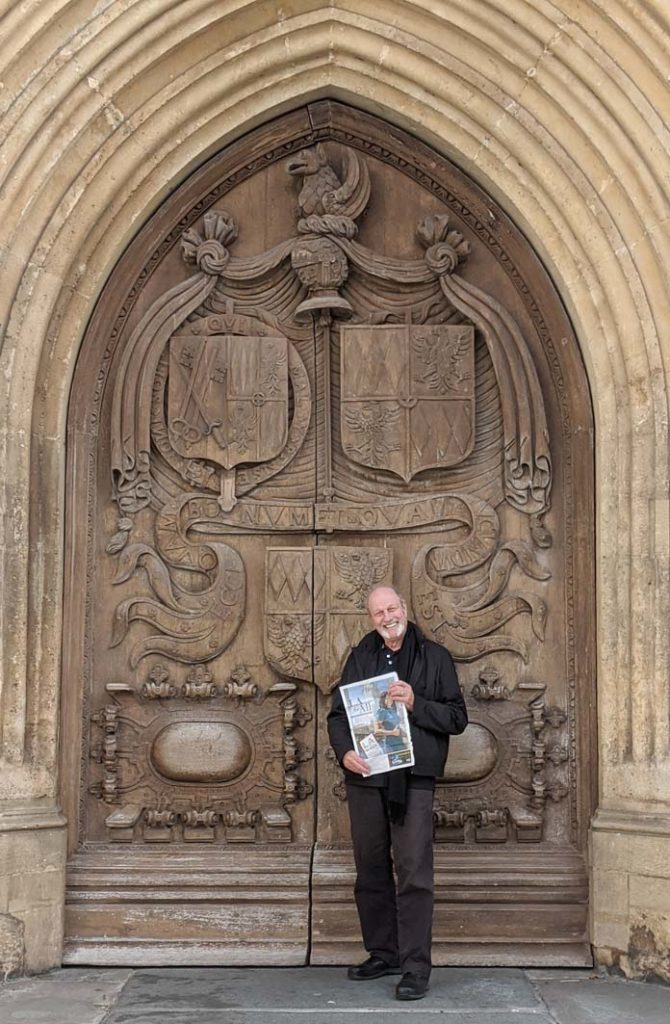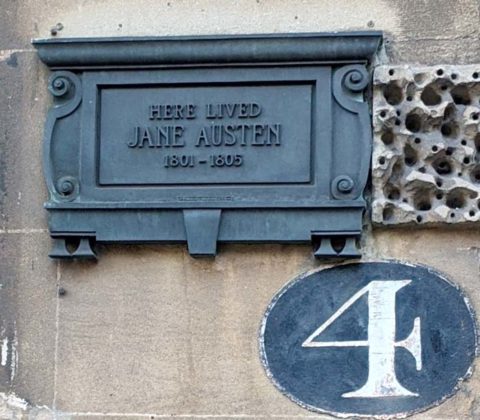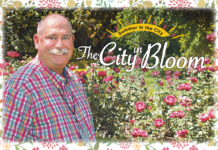 Send in your ALIVE! AROUND THE WORLD
Send in your ALIVE! AROUND THE WORLD
Take Alive! with you wherever you go! Bring your recent copy of Alive! with you when you travel and snap a high resolution photo of you holding Alive! Send in your pictures and text (click on the button to go to the form), and we’ll publish it.
SUBMIT YOUR ALIVE! AROUND THE WORLD
![]()
Letter From England, Pt. 3
Capt. Michael Barnes, Retired, Harbor, traveled to the land of his birth, England, post-vaccination.
Druids, King Arthur and Frankenstein

Bath is located 97 miles west of London, 11 miles southeast of Bristol.
More than 5,000 years ago — when the Druids were moving between the Preseli Hills stone quarry in Wales to the Salisbury Plain — the shrine dedicated to the goddess Sulis at the natural hot spring in the present-day city of Bath was where they would stop to rest and bathe, before continuing to haul the Bluestone monoliths on wooden sledges to Stonehenge 35 miles away.
The Roman invasion under Emperor Claudius in AD 43 led to the springs being enclosed, creating hot, warm and cold stone bathing pools, and was dedicated to their goddess Minerva. Some 400 years later, when Rome was under attack by barbarian hordes, Roman soldiers stationed in Britain were all recalled to Rome, leaving England in a dark and troubled age. During this period, the baths fell into disrepair and eventually slipped away as a result of the rising water levels and silting.
It has been said that King Arthur led the Britons to victory in AD 500 over the invading Anglo-Saxon siege of the city of Bath, arriving in time for his knights to smash the Anglo-Saxon foot soldiers. During this time, Bath became known as Acemannesceastre (“Akemanchester”), or “aching men’s city,” cementing the reputation that the springs had for healing the sick.
Later, in 675, Benedictine monks built a monastery atop the pagan temple on the strength of the healing power of the waters. The monastery has been rebuilt over the centuries, and today it is the largest standing Gothic building in the West Country. Along with being a place of worship, the tall vaulted nave serves as a perfect site for civic ceremonies, concerts and lectures. A small museum in the crypt is worth a visit.
During the city’s Georgian and Regency period, Bath attracted fashionable society to the thriving spa. People traveled from near and far to bathe in the healing spring waters, and to see some of the outrageous fashions promoted by the dandy “Beau” Brummell. Brummell’s ideas for sharp-dressed male fashion included introducing the tie — still an integral part of men’s wardrobes today.The Grand
Pump Room built in 1799 overlooking the Roman Baths became a great social center for visitors arriving to take the water pumped in from next door, and to gossip and see all the latest fashion. Novelist Mary Shelley spent many hours there writing her classic, Frankenstein. Ironically, under a plaque in her honor, outside the restaurant, in a vault, sits an underground electrical substation that delivers thousands of volts of power to central Bath! Jane Austen is another renowned author who also found the Grand Pump Room a perfect observation spot, collecting ideas for two of her novels. The author enjoying taking her afternoon tea in the Pump Room restaurant or attending swamis under the crystal chandeliers in the stunning grand ballroom of the octagon Assembly room building. Look for the plaques posted along the sweeping Royal Crescent and Queens Square, where you will find the names all the famous people who lived there through the years.
Between the Roman Baths and Pulteney Bridge, standing on the ancient cross roads of river and land is the stone Guildhall Market, dating back to 1359. In the center of the market is an interesting small stone pillar (Nail) said to be where the saying “’cash on the nail’” originated. The story is that the cash transactions between merchants and tradesmen were binding if taking place over the top of the stone pillar (Nail).
Pulteney Bridge is one of only three bridges in the world where buildings continue to operate for merchants and shoppers, with the oldest being Florence’s Ponte Vecchio on the river Arno, built in 1345. After Ponte Vecchio is the Kramerbrucke Bridge in the German city of Erfurt over the Gera River and built in 1510. Number three is Bath’s graceful Pulteney Bridge over the River Avon, constructed in the 1770s by Scottish architect Robert Adam.

Pulteney Bridge is a wonderful example of Georgian architecture and was a pleasure to stroll along from our Air B&B in the early evening to check out the city’s nightlife. There is a small set of steps going down to the river bank on the southwest corner, accessing a towpath and side entrance to the rugby grounds. A peaceful respite can be found in the garden of the Boater Pub by the river. We enjoyed a pint while listening to the weir and admiring the magnificent stone features of the Pulteney Bridge.
Bath has now become the culinary center for southwestern England, and we found a wide variety of places to eat, including the oldest bake house (circa 1483), home of the famous Sally Lunn Bun (a semi-sweet bread). We also discovered a tearoom offering the world’s best Cornish pastries, and a really nice Spanish Casa de Tapas with outstanding Rioja red wine. Along the way we enjoyed Joya, an award-winning five-star Italian restaurant, where they serve a great antipasto piccolo, house linguine and a fine bottle of Nero d’Avola. Our favorite was the Green Park Brasserie, offering great cocktails and nightly live jazz in a former 1870s Victorian railway station booking hall.
Our visit to Bath concluded on a crisp Saturday afternoon visiting the local rugby ground, where we watched two local teams battle it out before a full outdoor stadium. Unlike other ball sports requiring dozens of players constantly taking a rest, rugby is played between two teams of 15 players — 45 minutes each way — with an oval-shaped ball and played on a rectangular field called a pitch. The field has H-shaped goalposts at each end; there are no motorcycle helmets, no excessive body armor worn, with only male private parts protected and a couple of extra players in reserve in case of any broken limbs. Post-game, the home team hosts the visiting team to drinks and revelry at the club house. If you ask any Brit who has played the game, this is the best part of the match — no animosity, just camaraderie and respect for a game well played. Rugby is a game played by gentlemen, while football (soccer) is a game played by hooligans.
As always, travel while you can, and stay safe.
























